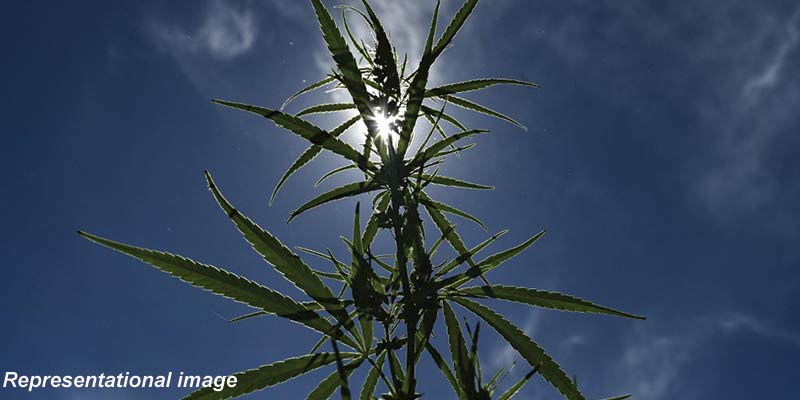- India
- Dec 05
Explainer - Drug trafficking in India
• India’s fight against narcotic substances is complex and multifaceted, involving enforcement actions coupled with advanced detection technologies, international cooperation and robust legal frameworks.
• The Directorate of Revenue Intelligence (DRI) continues to play a pivotal role in this battle, making significant seizures and dismantling and busting drug syndicates and networks.
• The DRI released the ‘Smuggling in India Report’ 2023-24.
• In 2023-24, DRI booked 109 cases involving 8,223.61 kg of narcotic drugs and psychotropic substances including 107.31 kg of cocaine, 48.74 kg of heroin, 136 kg of methamphetamine, 236 kg of mephedrone and 7348.68 kg of ganja.
• The seizures indicate an increasing trend of smuggling of cocaine through air passenger routes, from 21 cases in 2022-23 to 47 cases in 2023-24, with a majority of seizures at airports.
Directorate of Revenue Intelligence
The Directorate of Revenue Intelligence is the apex anti-smuggling agency of India, working under the Central Board of Indirect Taxes & Customs, Ministry of Finance. It is tasked with detecting and curbing smuggling of contraband, including drug trafficking and illicit international trade in wildlife and environmentally sensitive items, as well as combating commercial frauds related to international trade and evasion of Customs duty.
Availability and use of wide range of drugs
• In recent years, India has witnessed a marked increase in the availability and use of a wide range of narcotic substances. This includes traditional drugs like cocaine, heroin, cannabis and opium, as well as synthetic drugs such as methamphetamine and MDMA (commonly known as ecstasy), and some of the New Psychoactive Substances (NPS) that have emerged on the global stage.
• The diversity and potency of these substances pose significant health risks to users and challenge the capacities of law enforcement agencies.
• As the global drug trade evolves, so do the methods and routes used by traffickers to smuggle drugs into and out of the country. The country’s robust economy and burgeoning youth population targeted as a lucrative market by the drug syndicates, further complicates the efforts in controlling the drug menace.
• India faces significant challenges with the trafficking of various drugs. Proximity to opium growing countries and clandestine laboratories for further processing, aids in trafficking of heroin through various routes into India.
• Cannabis, including its more potent forms like charas and ganja, continues to be illicitly cultivated in remote areas and forests and further processed, trafficked and traded.
• Along with this, hydroponic weed, hashish, and various other forms of cannabis origin drugs have emerged. Synthetic drugs such as methamphetamine, MDMA and NPS are increasingly smuggled into India
from the northeast land border. The rise of synthetic opioids like fentanyl poses new challenges.
• As a major pharmaceutical manufacturer globally, India has also witnessed the clandestine export of pharmaceutical products that can substitute for narcotic substances.
Yaba - Crazy Medicine
• Yaba, a potent drug tablet that combines methamphetamine and caffeine, mostly produced in Myanmar, takes its name from the Thai phrase “yaa baa”, meaning “crazy medicine”.
• This colloquial term reflects the intense rush and hyperactivity induced by the drug, which has become particularly prevalent in Southeast Asia.
• Originally developed for military use during World War II to enhance stamina and alertness among soldiers, Yaba has evolved into a recreational drug infamous for its severe addiction potential and devastating health effects.
• In recent years, law enforcement agencies have observed a troubling increase in its circulation, leading to significant seizures across the region.
Major drug trafficking routes:
1) The Death Crescent: This region, comprising Afghanistan, Iran and Pakistan, is a primary source of heroin trafficked into India. This heroin is routed to India mainly through Africa and Gulf regions, in addition to traditional routes through India-Pakistan border and maritime routes.
2) The Death Triangle: This area, encompassing Myanmar, Laos and Thailand, is a significant source of synthetic drugs and heroin. Drugs from this region often enter India through the northeastern states, where difficult terrain, and porous borders makes trafficking easier at multiple entry points.
3) Maritime Routes: The vast coastline of India presents opportunities for drug traffickers to use maritime routes.
4) Air Routes: Drug trafficking through air route has also become a potent method for smugglers due to the speed and increasing volume of international air traffic. Drugs are often concealed in luggage, courier packages or ingested by carriers (known as “mules”).
Cocaine trafficking:
Cocaine trafficking has seen a marked increase in India, particularly through direct routes from South America and via African countries. The number of cases involving cocaine smuggling by air has risen year on year, presenting significant challenges to Indian law enforcement agencies. The number of cases involving this route, particularly via air travel, has escalated each year. A majority of the smuggling involves body concealment of narcotics. This method often evades detection through standard airport screening methods, posing a considerable challenge for enforcement agencies. Baggage concealment remains the second most prevalent form of smuggling. The financial landscape for the flow of money back to source countries has also undergone significant changes. Payments for narcotics through cryptocurrency have been on the rise.
Heroin trafficking:
Heroin is majorly sourced from Afghanistan and trafficked into India through various routes like air, land and maritime pathways. Myanmar also acts as a major source for heroin entering into India. Heroin seizures by DRI have shown a decreasing trend compared to the previous financial year, aligning with global trends reported by international agencies. Most of the heroin seizures made by DRI during the last year involved trafficking through air routes via African countries and land routes through the porous northeast borders. Instances of smuggling heroin through the Indo-Pak border at Attari have also been noticed.
Cannabis seizures:
India has a long history of cannabis cultivation and use, with the plant growing naturally in many parts of the country. Cannabis cultivation and use are illegal in India under the NDPS Act, 1985, except for medical and scientific purposes. This has led to a thriving black market for cannabis and its derivatives. India is home to several renowned cannabis varieties. Among these, Idukki Gold, Mysore Gold, Malana Cream and Sheelavathi stand out as major varieties, each named after their respective regions of cultivation. Sheelavathi, which is grown in the Andhra-Odisha border, is the most frequently traded illegally, and majority of seizures done by enforcement agencies involve this particular variety.
In addition, cases of hydroponic weed variety coming from the USA, Thailand and other countries have also been observed by DRI. Hydroponic weed is cannabis grown in nutrient-rich water without soil, allowing for precise control over the growing environment.
Hashish, or hash, is a concentrated form of cannabis made by compressing the plant’s resinous trichomes into a solid substance. It is typically more potent than ganja, which refers to the dried flowers and leaves of the cannabis plant. Instances of smuggling hashish to Sri Lanka in boats have been noticed by enforcement agencies.
Domestic legal framework
• Drug law enforcement in India derives its strength from Article 47 of the Constitution of India, which reads: “The State shall endeavour to bring about prohibition of the consumption except for medicinal purposes of intoxicating drinks and of drugs which are injurious to health”.
• In alignment with this constitutional mandate, Parliament enacted the Narcotic Drugs and Psychotropic Substances Act, 1985. The Act prohibits, except for medical or scientific purposes, the manufacture, production, trade, use, etc, of narcotic drugs and psychotropic substances.
• To tackle the drug menace, India adopted the policy of empowering multiple agencies to enforce the NDPS Act, 1985, DRI being one such agency.
• DRI plays a pivotal role in this battle, making significant seizures and dismantling/busting drug syndicates and networks.
• However, evolving trends in drug trafficking and the emergence of new psychoactive substances necessitate continuous innovation and adaptation in enforcement strategies.
• By understanding these trends and addressing policy gaps, efforts to combat the growing threat of narcotic substances and safeguard public health and safety can be further strengthened.
Manorama Yearbook app is now available on Google Play Store and iOS App Store


